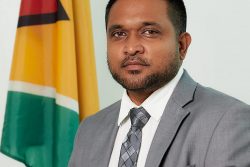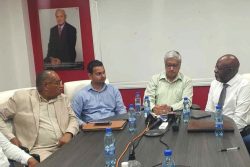Dear Editor,
As a Morucan from Santa Rosa Village it was wonderful visiting my place of birth. All the villages in the sub-region are gaining a gradual understanding of a District Council (as stipulated in the Amerindian Act of 2006 Section 35 (1) (a) – (d). The Moruca District Council is supported by the Amerindian Peoples Association (APA), and according to a member of the council, “currently Santa Rosa is working on having their village bi-laws gazetted and tremendous works are being done by the Moruca District Council (MDC) in educating the village leaders in the Moruca Sub-region regarding their functions and other keys areas of the Amerindian Act 2006”. I was enchanted at the qualified Morucans on the staff at government institutions in the area. There are the teachers, local administrators, medical personnel, and business owners. The community is home to mix Morucans, Waraos, Karina/Carib and Arawak/ Lokono peoples.
Most Morucans are hard-working and portray upward mobility. However, on the flipside to advancement; of the three groups, two of them – the Warao and Karina/ Carib seem to maintain their languages to some extent. Over two hundred years, since the village’s ‘establishment’ and with continuous transformation, the languages are facing extinction. Maybe the other Indigenous groups who value and still speak their languages like the Wapichan or the Patamonas can come to animate us with venture. The central commercial area, known as the Kumaka Water Front has an urban appearance of expanding businesses. While these activities are occurring, the community is administered by the village council, comprised of the Toshao and Area Councilors. This administrative body cooperates with the Ministry of Amerindian Affairs, Ministry of Agriculture, Office of the Prime Minister, and the Regional Democratic Council (RDC) of Region One in planning and execution of Government projects in the sub-region. For people who don’t belong to Moruca they would conclude that it’s an urban community being fully supported by a RDC. On the contrary, the community’s upward mobility is a result of the enterprise and endurance of the local people.
While advancement is good, it seems that the collective aspect that is part of the Indigenous culture is eroding or not practiced among most of the residents. Individualism in families and other social settings is creeping in, thus making them vulnerable and dependent on authorities from outside to provide handouts. In terms of access to modern technology, the community has a telecommunication facility provided by Digicel. A ‘good service’ better than none, but not too efficient in regards to strong internet signal. This medium is now an important tool for hinterland people, especially for students, teacher and others who want to pursue degrees from online Universities. Government institutions like the secondary school, the post office and the local administrative centers have stronger signals but these doesn’t cater for the majority residents.
In the city there is a ‘better internet service’ but city Guyanese cannot compare with folks from the hinterland, due to intermittent internet service that people from the interior experience. This being said, there is need for collective voices of residents and other authorities in the village to put aside individualism and unite to demand for better internet service. Many young people want to pursue studies online but are discouraged by a difficult and sporadic internet service. I felt sad listening to young trainee teachers having to spend half of their salaries on Digicel data plan to study online in this uncertain digital environment. Further-more, governments (past and present) should be applauded for assisting to construct ‘better roads’ and the San Jose bridge, but more needs to be done to make life easier for the people, especially the vehicle owners and others that charge people high taxi prices because they have to repair their cars after driving on the rough roads.
In conclusion, the Creole language is spoken by many in Moruca and it is important to recognize it as having an important role in children’s learning. This sociolinguistic reality could trigger the revitalization of the other Indigenous languages that are slowly dying.
Sincerely,
Medino Abraham





